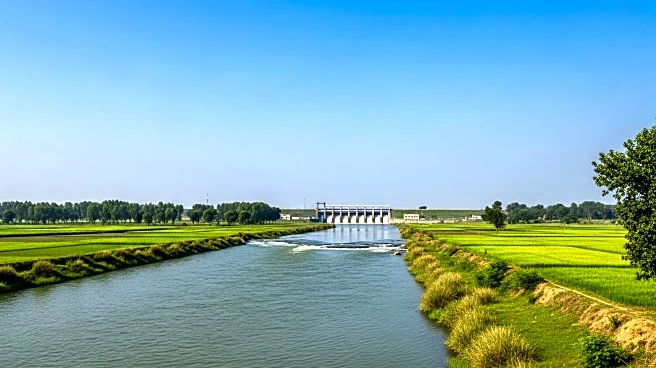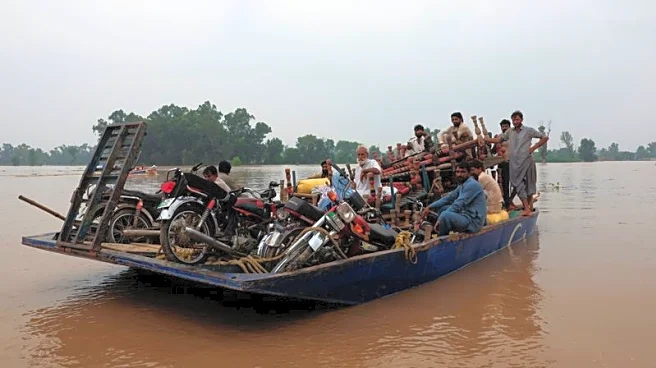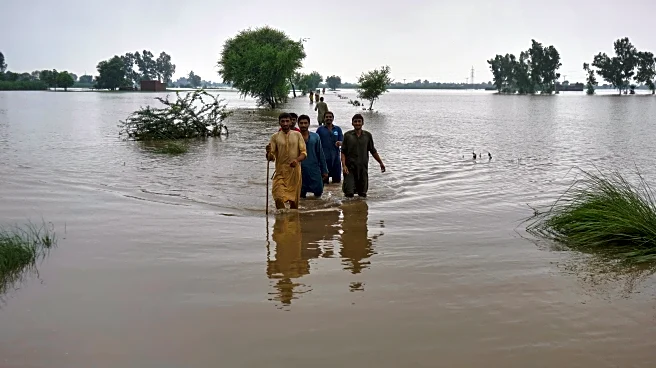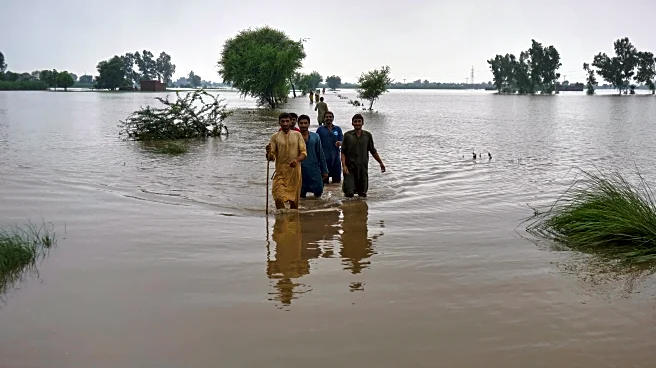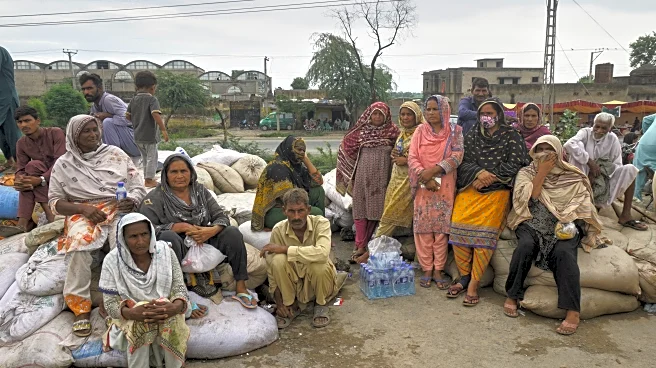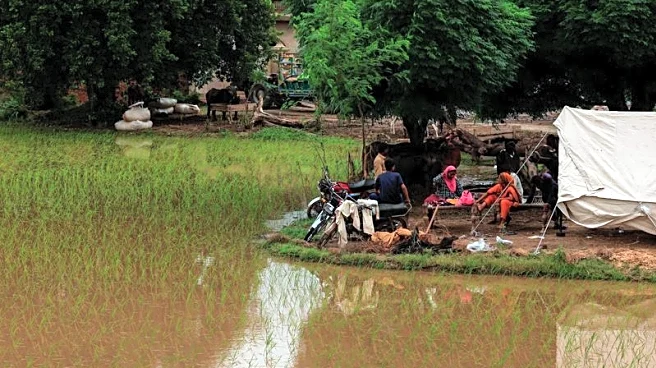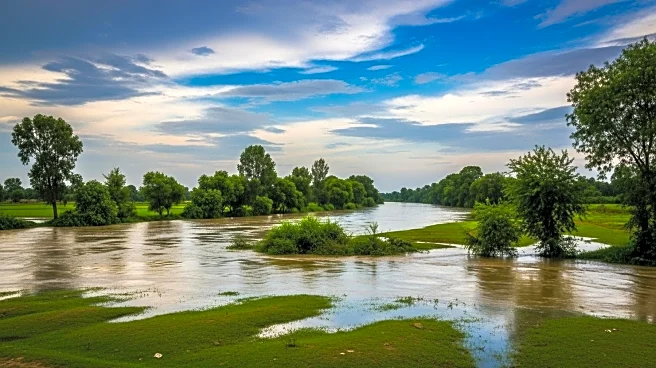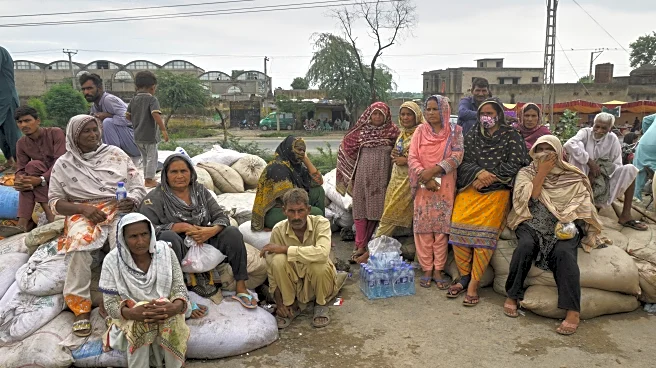What is the story about?
What's Happening?
The Punjab government has taken drastic measures to manage an unprecedented flood crisis by initiating controlled breaches of key flood bunds. This action aims to divert surging waters from the Chenab, Ravi, and Sutlej rivers, which have overflowed simultaneously for the first time in Pakistan's history. With 855,000 cusecs expected to reach Head Trimmu within 24 hours, authorities have evacuated over 429,000 residents and deployed explosives to protect urban centers from catastrophic flooding. Torrential monsoon rains have affected both Pakistan and India, with further heavy downpours forecasted. The breaches are intended to relieve pressure on critical areas, including Jhang city, where bunds have been breached to prevent inundation. Relief Commissioner Nabil Javed stated that these measures are necessary to protect lives and infrastructure.
Why It's Important?
The flooding crisis in Punjab highlights the severe impact of climate-related events on infrastructure and communities. The simultaneous overflow of three major rivers poses significant challenges for disaster management and underscores the need for robust flood mitigation strategies. The evacuation of over 429,000 residents and the loss of 20 lives illustrate the human cost of such natural disasters. The government's response, including the use of explosives to divert water, reflects the urgency and scale of the situation. This event may prompt a reevaluation of flood management policies and infrastructure resilience in the region, potentially influencing future public policy and disaster preparedness strategies.
What's Next?
As the flood situation evolves, authorities are expected to continue monitoring water levels and implementing further measures to protect vulnerable areas. The National Disaster Management Authority has issued flood warnings and alerts, urging residents to remain prepared for emergencies. The ongoing monsoon rains, predicted to last until September 2, will likely exacerbate the situation, requiring continuous assessment and response efforts. The government may also focus on post-flood recovery, including compensation for affected families and rebuilding efforts. Long-term strategies may involve enhancing flood defenses and improving early warning systems to mitigate future risks.
Beyond the Headlines
The flood crisis in Punjab may have broader implications for regional cooperation on water management, particularly with neighboring India. The breach of a dam in India has contributed to the flooding, highlighting the interconnected nature of water resources and the need for collaborative approaches to manage transboundary water issues. Additionally, the event may raise ethical considerations regarding the use of explosives and forced evacuations, prompting discussions on balancing immediate disaster response with long-term community impacts.
AI Generated Content
Do you find this article useful?
